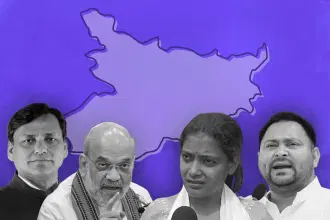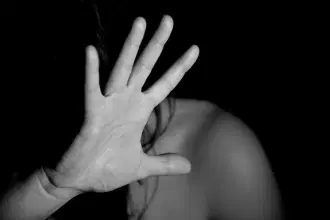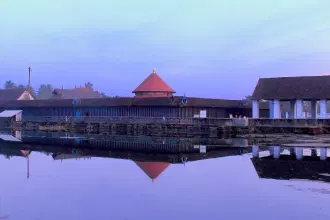Tamil Nadu
Why Caste Related 'Honor Killings' Must Not Go Unanswered
Aravindan Neelakandan
Aug 05, 2025, 11:30 AM | Updated 11:30 AM IST
Save & read from anywhere!
Bookmark stories for easy access on any device or the Swarajya app.
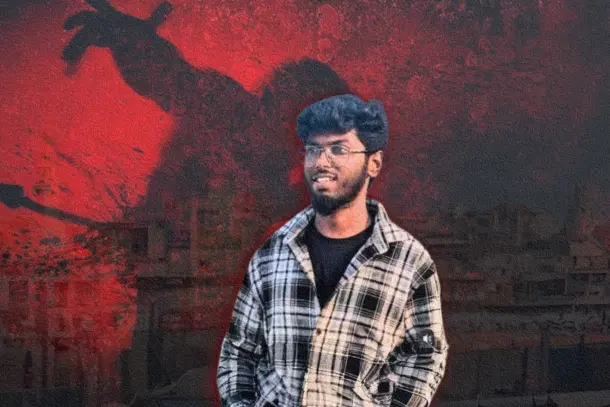
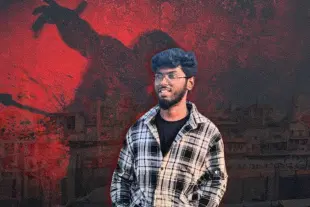
A laptop in a Tuticorin home now lies silent.
A promising career in technology, a beacon of hope for a family, was brutally extinguished in late July. Kavin, 26, is dead. He was not the victim of a random robbery or a tragic accident. He was hunted and killed in the name of a grotesque caricature of what his murderer perhaps considered ‘honour’. His only crime was to love a woman from a different caste.
In the WhatsApp age of instant loves and immediate breakups, his love had been consistent, slowly flowering right from the school days. But that love was not blind to the progress of their careers. It was not a distraction. According to reports, Kavin was a topper in his college. As a tech graduate, he had joined one of the topmost IT companies and was earning around twelve lakhs per annum. By all accounts, the boy was a life-loving, gentle youth. The girl was equally meticulous. She had become a Siddha doctor, working in a private clinic.
By all accounts, this should have been an ideal love story. Unlike how love has been portrayed in films, here one finds two lovers — right from the school days — keeping their flame intact and, through the decades, building illustrious career paths in independent fields while supporting each other.
But the Thevar jaati to which the girl belonged, and the Devendra Kula Vellalar jaati to which the boy belonged, have had nearly two centuries of conflict. The latter has been pushed into that social space of ‘untouchability’. The colonial period ensured they were divested of their land and water rights, and they were reduced to landless labourers.
The Thevar community too has seen its clans branded as ‘criminal tribes’. There have also been constant conflicts between the two communities. One is classified as a ‘Backward Caste’ and the other as a ‘Scheduled Community’.
Today, we hear voices of hatred from both sides. But that does not equalise the criminal and the victim. One is the provocation, and the other is the reaction.
There has been a narrative peddled by caste Dravidianists in Tamil Nadu that the Scheduled Community boys are targeting the so-called ‘upper caste’ girls for material benefits, and that it is not true love. They dub it Nadaka Kathal – meaning staged love.
According to this narrative, unemployed and unemployable youths who are womanisers target girls, make them fall in love, and then do unspeakable things to them while blackmailing their parents for hefty sums to rescue their daughters. And yet, in the cases of honour killings, we note that the boys are well-to-do or are decently settled and are simply looking to marry their loved ones.
Now, the Devendra Kula Vellalar community people have started alleging that non-SC girls are targeting well-educated and highly salaried SC boys. They are reversing the Nadaka Kathal narrative. Their leaders even bring in the ‘criminal tribes’ colonial discourse and categorise the entire community as being prone to murderous violence.
Dalit leader and Member of Parliament Thol. Thirumaavalavan visited the grieving family. It seems he has secured the trust of the grieving family’s community. The bereaved father expressed hope that the MP would take the issue of justice for his son to India’s Parliament.
However, Thirumaavalavan saw it fit, in this moment of grief, to reinforce his own ideological hatred for Sanatana Dharma. His ideological position is actually part and parcel of the Dravidianist worldview. It posits a direct causal link between the philosophical and social framework of Sanatana Dharma and the criminal act of honour killing.
In this perspective, Sanatana Dharma is not a spiritual path but the ideological bedrock of the caste system. The argument is that the varna system, endogamy, and notions of ritual purity and pollution create a social hierarchy.
This hierarchy, when challenged by acts like inter-caste marriage, can lead to violent enforcement by those who believe they are upholding dharma and/or ‘honour’. In this view, Kavin's murder is not an aberration but a predictable, brutal outcome of an ideology that stratifies society by birth.
This is a strong argument. It almost sounds valid.
But is it true?
The Upanishadic teaching of Brahman as the essence of every individual actually makes even viewing another as inferior the highest blasphemy against the Divine. In fact, Hinduism, which allows even verbal poetic blasphemy of a deity as a form of worship, is strictly against devaluing the divine essence of every individual. History is witness to Hindu Sanatana Dharma repeatedly reasserting this principle against all the rules of social stagnation.
Yet the continuation of caste-based honour killings and unrelenting caste hatred being spewed in Tamil Nadu deserves a response.
It requires a demonstration of the Upanishadic principle in this age of modern challenges. This is not about caste leaders like Thirumaavalavan. This is the obligatory duty of Hindu traditional, social and spiritual leaders — the Dharmic trustees of Sanatana Dharma.
In the context of increasing attacks on Scheduled Community Hindus by fellow non-SC Hindus, Hindu spiritual and social leaders should intervene. They must not maintain neutrality but clearly state who is Dharmic and who is Adharmic; who is Daivic and who is Asuric. One does not have to search and churn the scriptures to find out.
Sri Krishna states that anyone who thinks he is of high clan, superior to others, and entitled to perform yajna and charitable acts from the notion of superiority and ego, such persons are Asuric (Bhagavad Gita 16:15).
Krishna further states clearly that those who abuse the body of a fellow human being out of pride, power, sectarian chauvinism, greed and vengefulness actually hate the Divine that resides in the body of the one hated and the one who hates (16:18).
Caste pride, as it manifests in any caste-related crime, can be clearly defined by this combination of aspects — pride, power, sectarian chauvinism, greed and vengefulness. Such people are Asuric, says Sri Krishna. One who hates none is dear to Sri Krishna.
Siva himself instructed one of the foremost of the Saiva Siddhanta to give deeksha without discrimination to a person considered untouchable in those days. Once deeksha is given, the person is part of the Dharmic fraternity. And for Hindus, there is no distinction between spiritual and secular.
Fraternity is the very basis of nationhood, according to Bodhisattva Ambedkar. Hindu Nation or Hindu Rashtra is not a political goal. It is not the changing of our secular Constitution. Hindu Rashtra is an existential and historic reality to be experienced and realised by Hindu society. That cannot happen till the feeling of jaati exists.
The first, most humane step is for these leaders — our Aadheenams, Swamijis, and Mathathipathis — to visit Kavin’s grieving family. This is not a political act; it is a spiritual one. Imagine the pressure a visit from a revered spiritual guide could bring to the system to usher justice to the victim and his family.
Imagine the solace such a visit will bring to the mother who has lost her son, to the father staring into a future devoid of his child's presence. Imagine the healing such a visit shall bring to the community, which is an integral part of Hindu society, a community that has been oppressed for the last two centuries and which is fighting humiliations and atrocities.
Such a visit would be a powerful statement. It would signal that Dharma stands with the victims of hate, not with the perpetrators. It would be a living embodiment of karuna (compassion), assuring a broken family that their sorrow is shared and their son’s life was precious in the eyes of God and community.
If each caste's religious order stood for and limited itself to those of its own, what is left of the larger Hindu consciousness? Is there even one? Surely, this is not the sanghatan that could preserve Dharma?
The murder of Kavin is a deep wound on the soul of our society. We can let it fester into another statistic, another forgotten name. We can allow narratives of mutual hatred and hatred for Dharma to use the deteriorating wound and let it become a malignant tumour destroying the entire Hindu Dharma.
Or, we can let it be the moment our spiritual conscience awakens. The path to healing our society from this cancer of caste hatred begins not in the corridors of power, but in the hearts of our people. And it is our Hindu spiritual leaders who hold the lamp that can guide them out of this darkness. They must stand with Kavin's family now and lead the charge against this disease of the mind called jaati and birth-based varna.
This we should do — for Kavin, for Shankar, for Dhanush — the Scheduled Community boy found hanging in the house of his lover from another religion, and for countless others who are living in fear because they dare to question man-made boundaries. This we should also do whenever any caste is subjected to hateful targeting — in this case, the mischaracterisation of Thevars by Devendra Kula Vellalars.
If all this sounds utopian, please note that such attempts were made even a hundred years ago. Veer Savarkar carried out even more radical works in Ratnagiri in the 1920s. Dharmacharyas offered to do far more progressive things in service of awakening the country in the early 20th century.
We were capable of it a hundred years ago. We were far more willing to challenge old notions and move the needle in the early 20th century than we are today. It is time we brought back that spirit.

